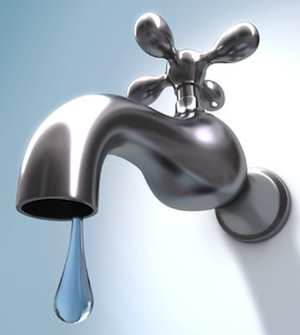- MENU
- HOME
- SEARCH
- WORLD
- MAIN
- AFRICA
- ASIA
- BALKANS
- EUROPE
- LATIN AMERICA
- MIDDLE EAST
- United Kingdom
- United States
- Argentina
- Australia
- Austria
- Benelux
- Brazil
- Canada
- China
- France
- Germany
- Greece
- Hungary
- India
- Indonesia
- Ireland
- Israel
- Italy
- Japan
- Korea
- Mexico
- New Zealand
- Pakistan
- Philippines
- Poland
- Russia
- South Africa
- Spain
- Taiwan
- Turkey
- USA
- BUSINESS
- WEALTH
- STOCKS
- TECH
- HEALTH
- LIFESTYLE
- ENTERTAINMENT
- SPORTS
- RSS
- iHaveNet.com: Health
Jill Weisenberger, M.S., R.D.

The Safe Drinking Water Act of 1974 charges the EPA with protecting the quality of drinking water for all 170,000 public water systems in the U.S.
Environmental Nutrition Newsletter
Ah, life-sustaining water. A cool, fresh drink to quench your thirst, hydrate your body and flush away toxins. At least 50 percent of your body weight is water; it protects your joints, maintains body temperature, transports nutrients and more. Even if you never ponder these critical roles for water, you probably know that you can't live without it. Recently, due to frequent reports of contaminated water, many Americans have become concerned about the safety of our water supply.
Last year, the
The biggest concern, says Nneka Leiba, M.Phil., M.P.H., a research analyst with the EWG, is that "nearly two-thirds of these contaminants are unregulated, and some have been linked to severe health risks."
The
The Safe Drinking Water Act, passed in 1974, charges the
According to
Sipping contaminants
The most common contaminants found in tap water are disinfection byproducts produced by disinfectants like chlorine that are added to drinking water to kill disease-producing bacteria or viruses. These are regulated compounds permissible in the water as long as the concentration does not exceed the
Some experts believe that the
Hormones, antibiotics and other drugs also make their way into the public water supply. Though the bathroom is likely the source of this contamination, it's not just from the toilet. Yes, drugs are excreted through feces and urine, and many people flush expired or unused medications down the toilet, but your morning shower is also responsible for contamination, say researchers in the
Some medications or their byproducts that are excreted in sweat, as well as those applied topically, can wash off in the shower or tub. Drugs making their way into the water supply is definitely cause for concern, but Ilene S. Ruhoy, M.D., Ph.D, coauthor of the study and director of the
Cleaning up water
Much more needs to be done to ensure our water is safe, specifically, by cleaning up the rivers and reservoirs that provide drinking water, stresses Leiba. Protecting this source water will reduce both the chemicals in drinking water and the cost of treating the water.
With the floodgates of public concern open again, EPA Administrator Lisa P. Jackson announced in March that her agency will go beyond the traditional framework of addressing contaminants individually and employ a grouping system, which will allow for a better and faster way of regulating them.
The
Filter Your Water
Once you've learned which contaminants flow from your faucet you can pick an appropriate filter. According to the EWG, a relatively inexpensive carbon filter that mounts on your faucet or comes in a pitcher can remove a large number of contaminants such as lead, chlorine and asbestos, but will not remove other pollutants such as perchlorate and nitrates.
Though more expensive, a reverse osmosis (RO) filter can remove many of the lingering contaminants leftover from a carbon filter. RO filters usually fit under the kitchen sink and work by allowing nothing larger than a water molecule to pass through a semi-permeable membrane. Some models combine RO technologies with carbon filters.
For a step-by-step guide to selecting a water filter, visit EWG's Water Filter Buying Guide at (http://www.ewg.org/tap-water/getawaterfilter).
WHAT FLOWS FROM YOUR TAP?
Learn about the quality of water in your area with these tips:
-- Contact your local water supplier; they're required to provide an annual report, sometimes called a Consumer Confidence Report, including information on contaminants found in the water, overall water quality and the source of your local water. They will send you a copy or you might find it online (www.epa.gov/safewater/ccr/whereyoulive.html)
-- Visit the EWG website (www.ewg.org) to search for the contaminants found in your water supply during the five years of their study.
-- If you suspect that you may have lead in your household plumbing, you'll need to have your home water tested (your water supplier tests water at the treatment plant). Call your state certification officer (www.epa.gov/safewater/labs/index.html) to find a certified water-testing lab.
Available at Amazon.com:
Last Child in the Woods: Saving Our Children From Nature-Deficit Disorder
Copyright © Environmental Nutrition Newsletter. All rights reserved.
AGING | ALTERNATIVE | AILMENTS | DRUGS | FITNESS | GENETICS | CHILDREN'S | MEN'S | WOMEN'S
Health - Tap Water Toxins: Fact or Fiction?